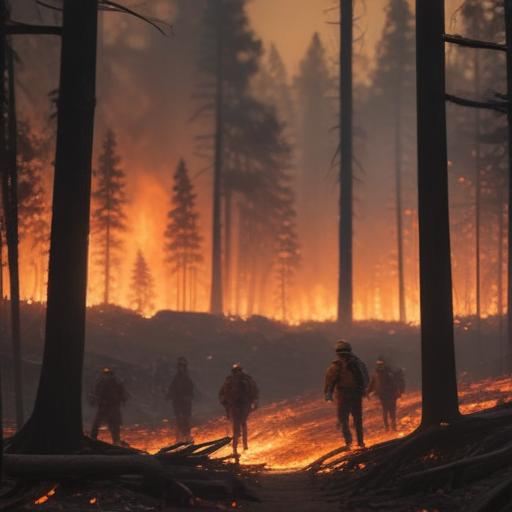Wildfires are a significant concern in Southcentral California, influenced by both natural and human factors. As the region approaches its dry season, understanding the interplay between climate, landscape, and community infrastructure becomes crucial in assessing wildfire risk.
The primary weather conditions that elevate wildfire danger include dry vegetation, arid air, and strong winds, particularly during the summer months when temperatures soar. As summer progresses and the area experiences its warmest temperatures, the vegetation becomes increasingly parched, setting the stage for potential wildfires. The typical weather pattern in this region involves strong atmospheric pressure, leading to clear skies and, particularly in the afternoons, a pronounced sea breeze. This breeze, originating from the cold Pacific waters, can become dry and gusty as it moves inland, amplifying wildfire risks when it encounters the hotter interior regions.
A significant factor is the sea breeze, which is caused by the stark temperature differences between the chilly ocean and the hot land inland. This pressure differential drives air from the ocean towards the interior, which can bring strong winds conducive to fire spread. Coupled with this effect is the phenomenon of “dry lightning,” which occurs when lightning strikes without accompanying rain. This occurs in conditions where a “dry layer” in the atmosphere evaporates the moisture before it reaches the ground, creating ignition risks in already dry areas.
Additionally, dry microbursts can enhance wildfire conditions. This occurs when rain from thunderstorms evaporates before reaching the ground, cooling the air and causing dense bursts of wind that can spread flames rapidly.
As California heads into the summer months, understanding these patterns will be pivotal in preparing for potential wildfires. Communities are encouraged to remain vigilant and informed about local weather changes, as such awareness can aid in anticipation and, ultimately, in mitigation of wildfire risks. The culmination of local expertise and weather tracking can empower residents in Southcentral California to take proactive measures against the threat of wildfires, fostering a united front in the fight against fire hazards.
The ongoing dialogue about environmental patterns not only enhances public awareness but also highlights the resilience and collaboration abilities necessary to navigate such challenges in the future.
